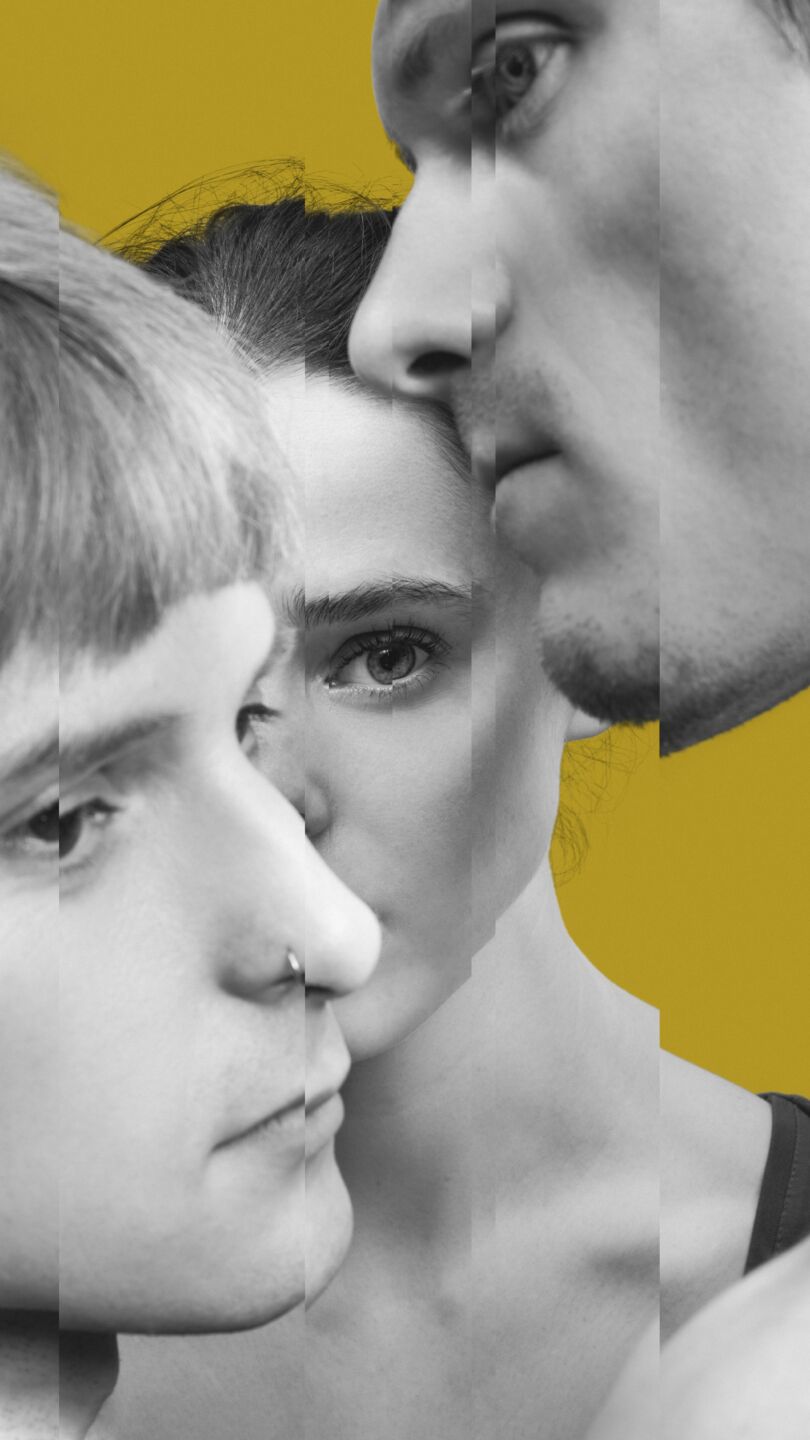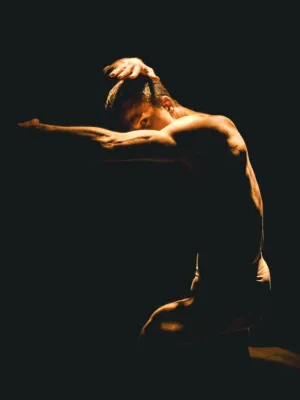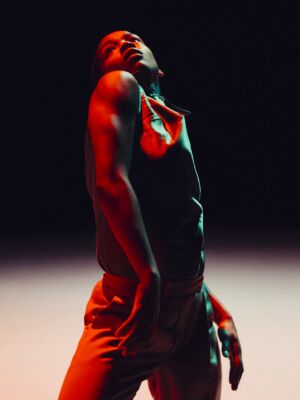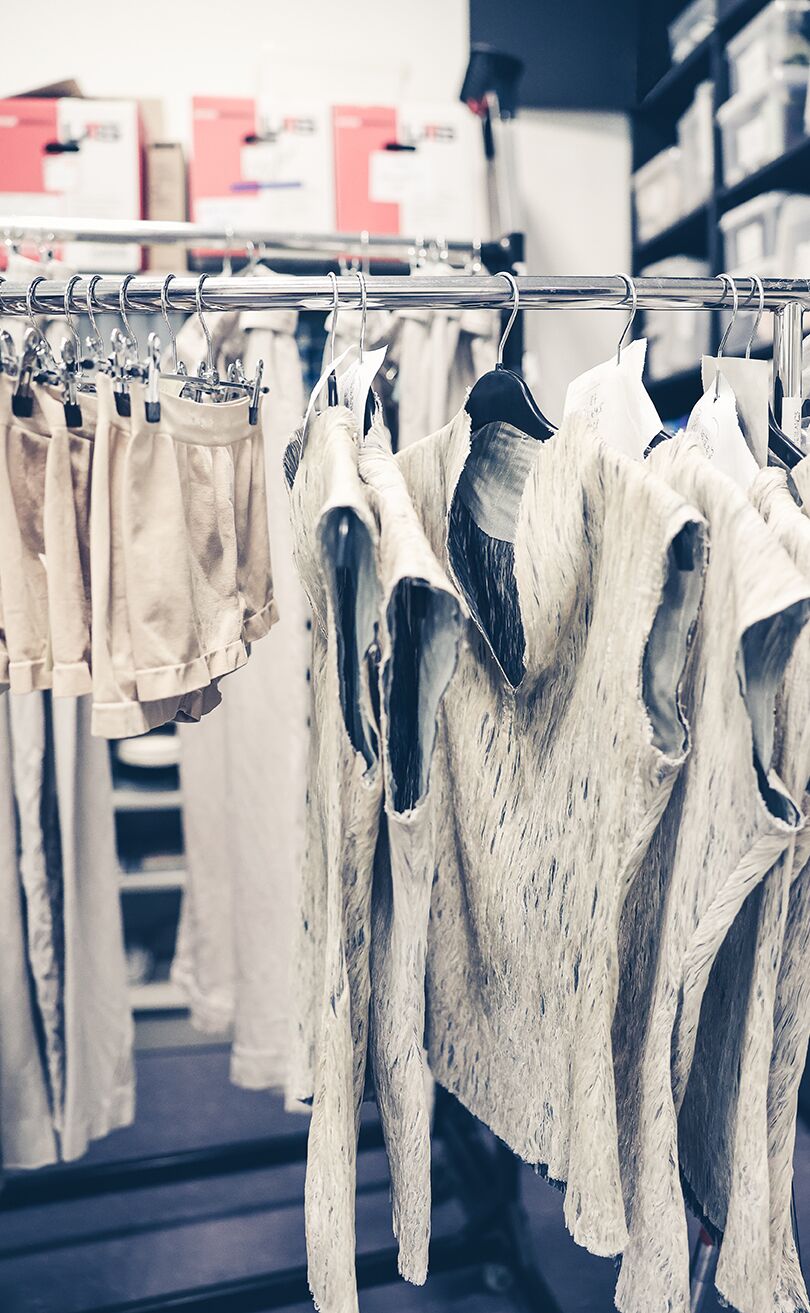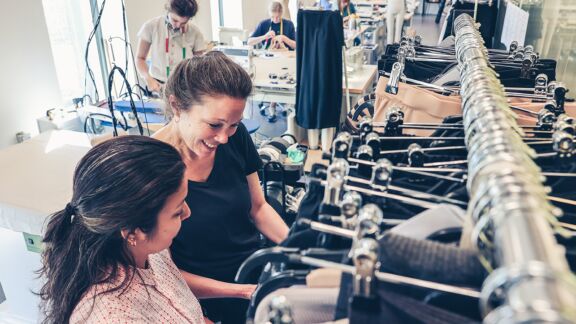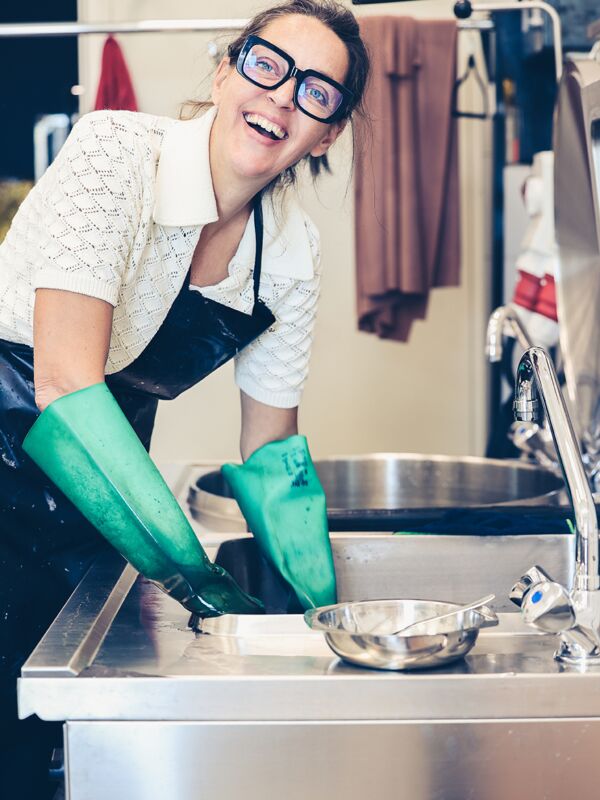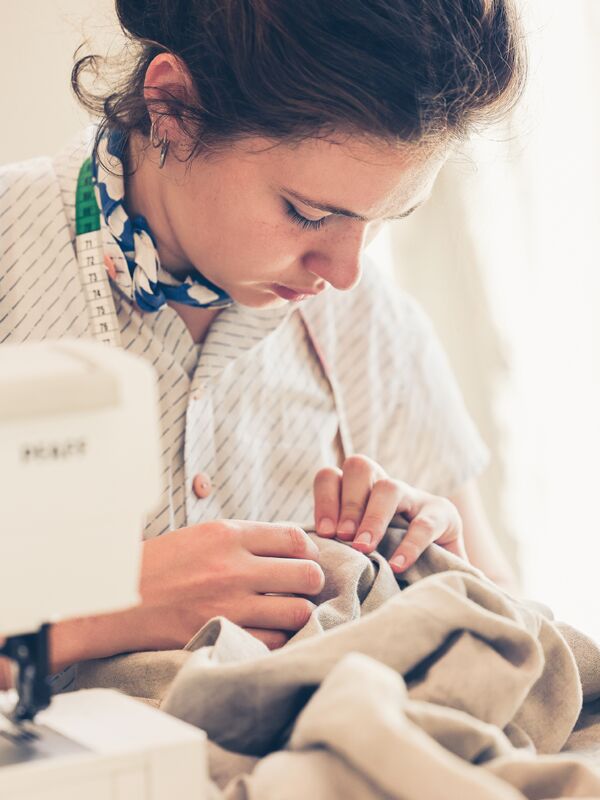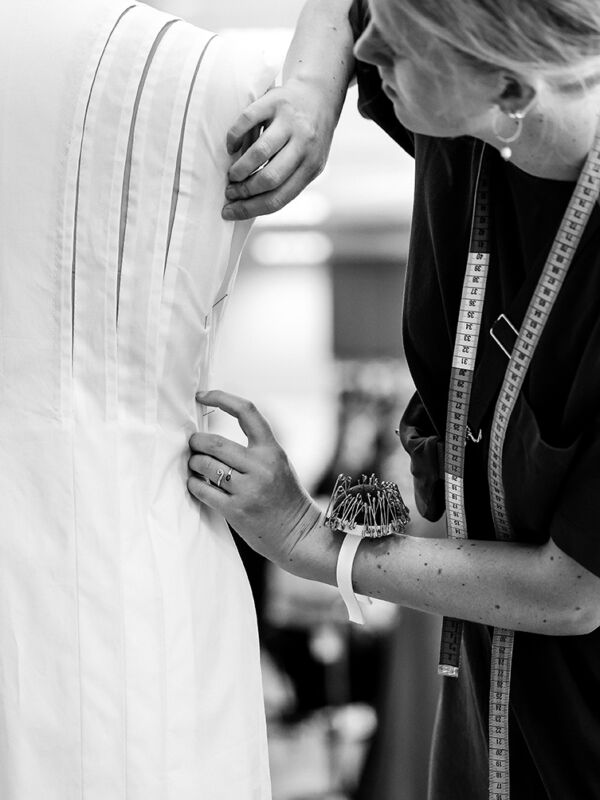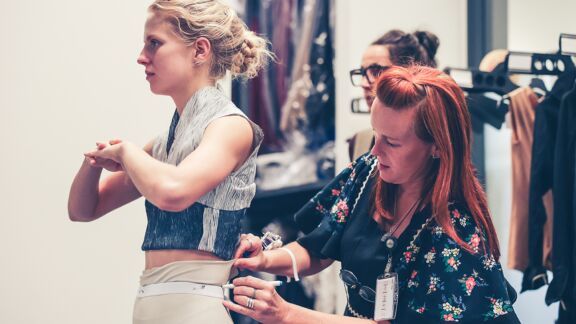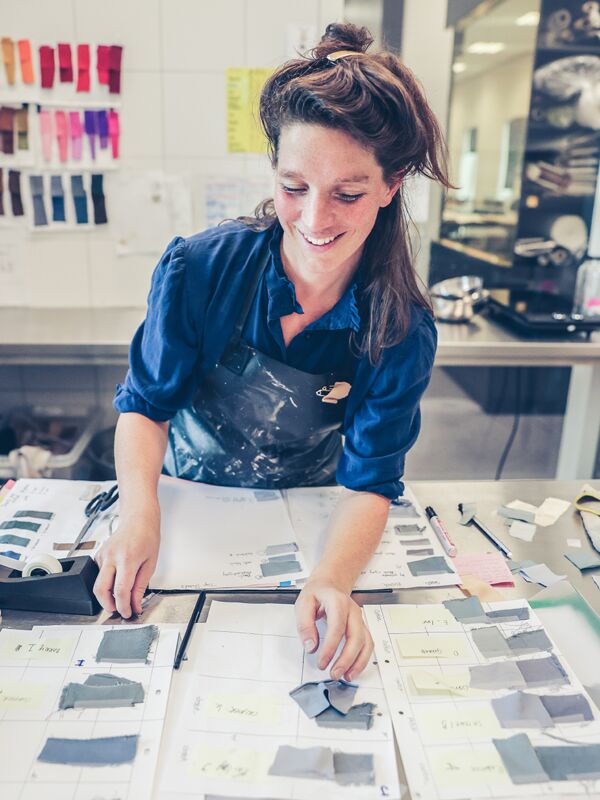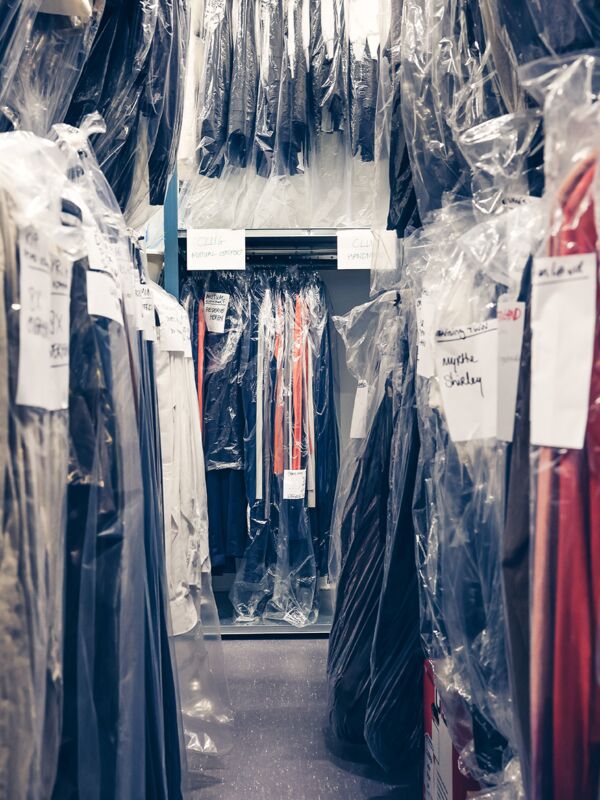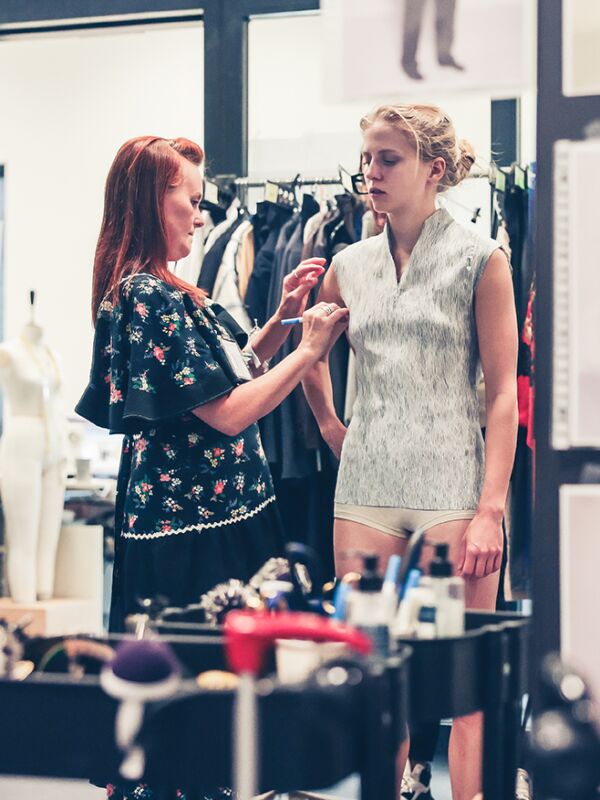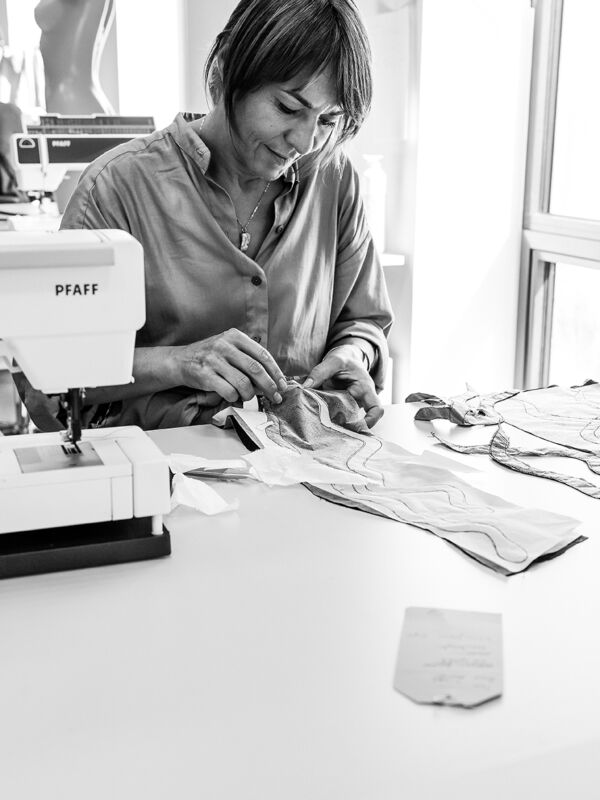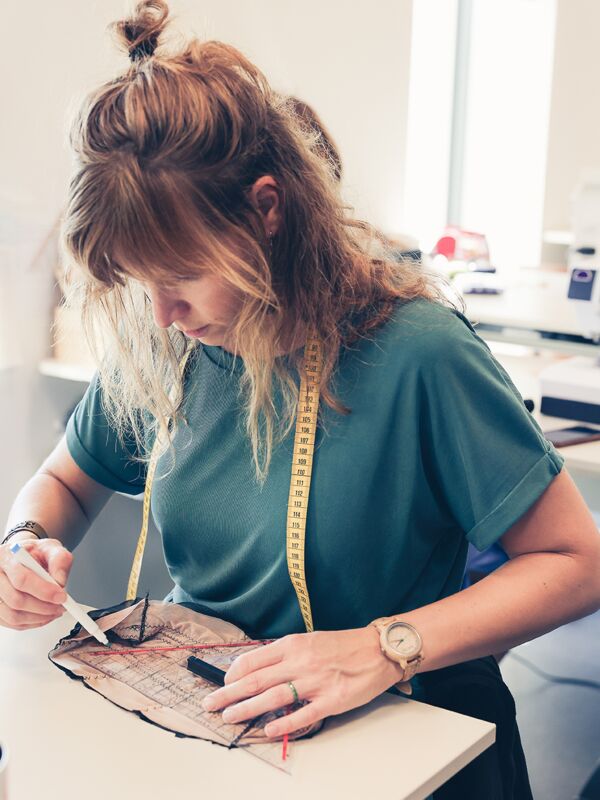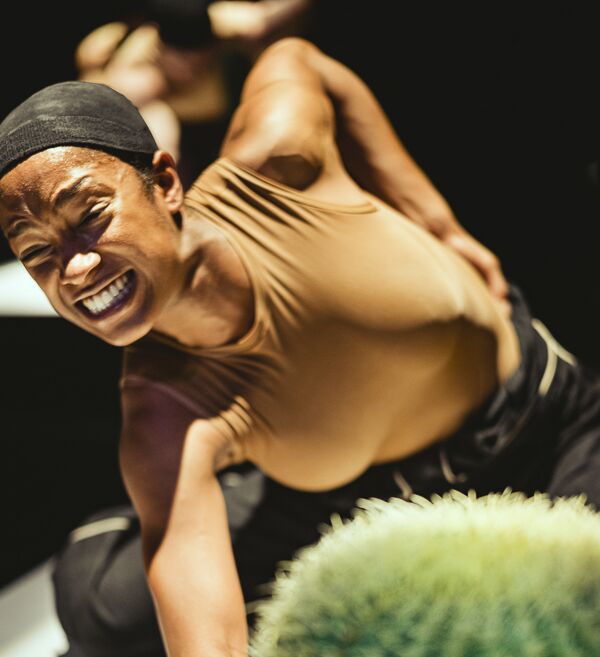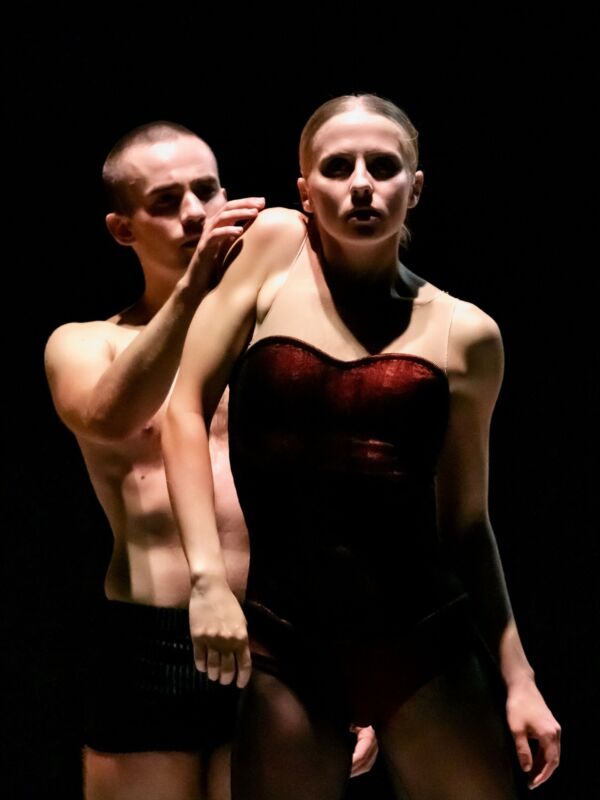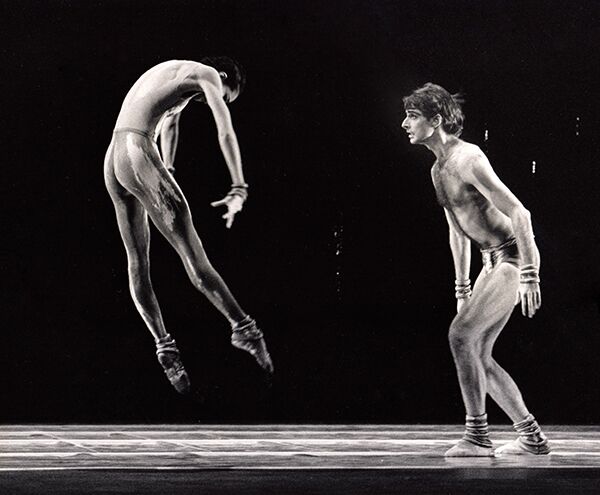Yolanda’s heart starts beating faster each time a new production starts. “That’s when I consult with the choreographer and costume designer. I always ask a lot of questions to get a clear idea of the choreographer’s signature and the costume designer’s design. How many dancers are there, what is the atmosphere, the music, the lighting, the color of the floor.
For example, we are doing a new work by Andrew Skeels this season, in which dancers move on the floor a lot. That means the trousers should be made of sturdy, stretchy fabric and with knee pads. Once the concept is clear you start talking about fabrics, colors, details like buttons, buckles or embellishments and whether or not to paint it. Skeels likes a gray dance floor and sometimes wants us to adjust the gray color of the costumes accordingly. I also try to get a handle on the level of difficulty. For instance, one designer wanted pleats that open on the back during movements. You have to translate an idea like that, research it. That’s why we make a prototype first, in order to try everything out. When we think a costume is perfect, it is tried on by a dancer in the large fitting room. Only then we can really see if the costume works. Sometimes it disappoints, or you get the eureka moment when you come up with a solution for a special effect on the spot. Not until everyone is satisfied do we start the production of costumes. Together with my production assistant Isabel Blokland, we go shopping for fabrics and order any props like wigs, decorations, masks, gloves, etc. At the beginning of the production process, I also work a lot with our dyer Roos Mikx, to exactly determine the colors and possible effects, and to decide on dyeing techniques, designs, degradé, light effects or, for example, whether or not we wish to age the fabric.”
